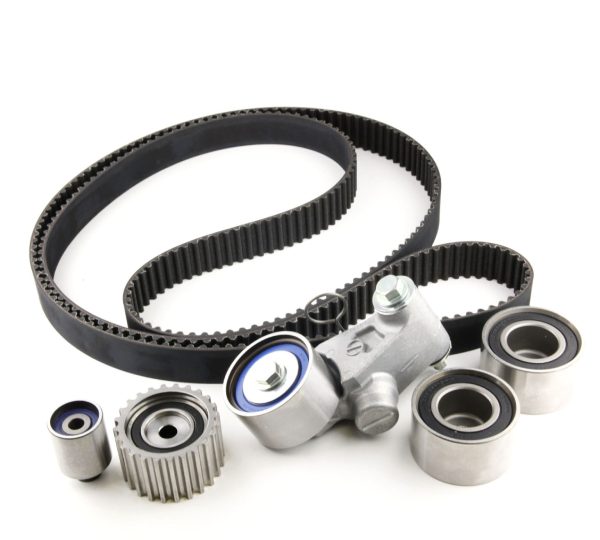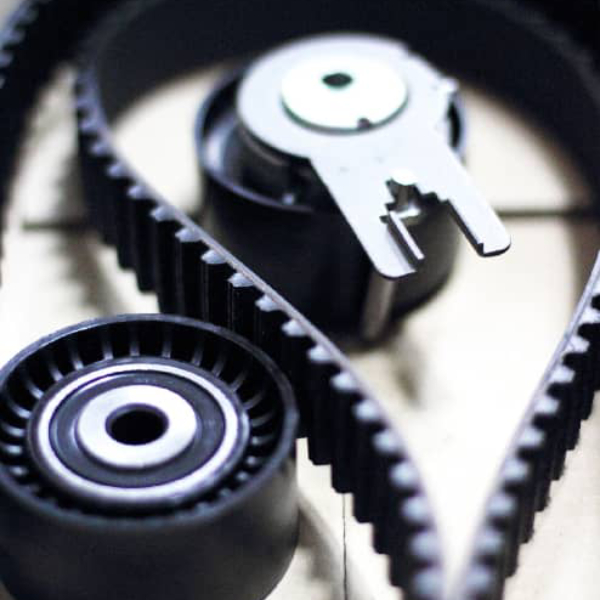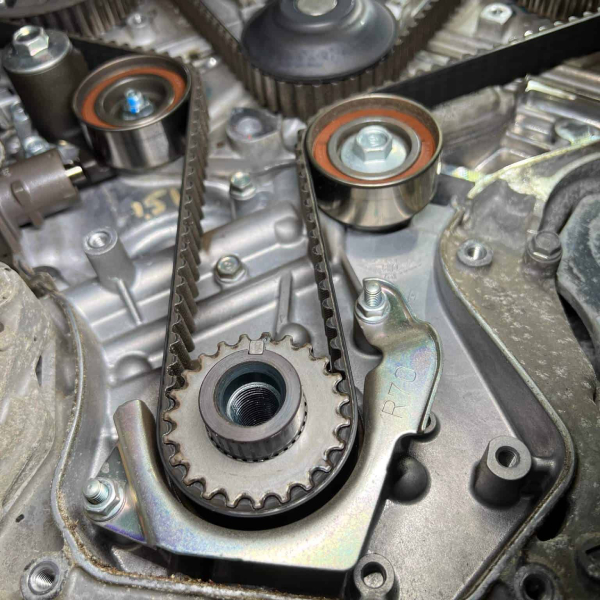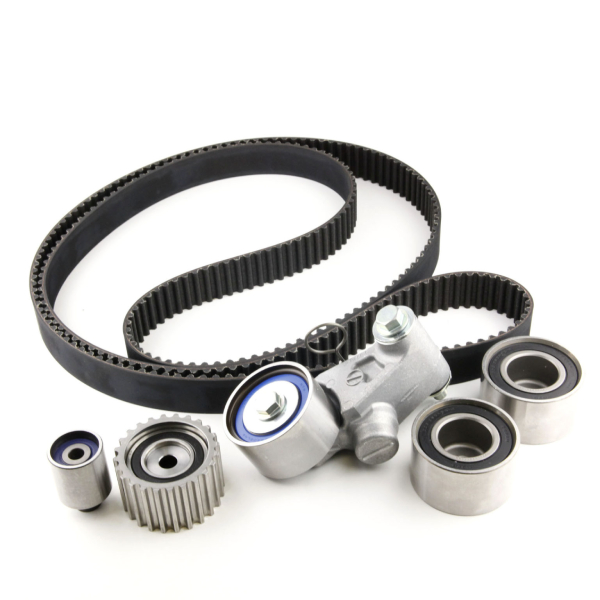
Timing Belt Replacement Guide: Finding Services Nearby
The Importance of Timing Belt Replacement
The timing belt is crucial for your car’s health. It keeps the engine’s valves and pistons moving in sync. A snapped belt can lead to severe engine damage. This is why timely replacement is key.

Regular replacement prevents breakdowns and costly repairs. The belt faces wear and tear with use. Over time, it may crack or stretch. It’s essential to replace it before it fails. It ensures your engine runs smoothly.
Maintaining the timing belt also sustains your car’s resale value. Cars with well-maintained parts fetch higher prices. It shows you have taken good care of your vehicle.
Safety is another major reason for regular replacement. A failing timing belt can cause your car to stop suddenly. This is risky, especially on busy roads.
In summary, replacing the timing belt on time is vital. It helps avoid engine damage, ensures smooth running, maintains value, and keeps you safe on the road.
Signs Your Timing Belt Needs Replacement
Recognizing the signs of a worn timing belt is crucial. It will help you prevent engine failure and reduce costly repairs. Here are key indicators that your timing belt may need replacement.
- High-pitched noise: A whining or squealing sound from the engine is a common sign.
- Engine misfires: A worn belt can affect timing, causing the engine to run poorly.
- Rough idling of the engine: You may feel vibrations or hear unusual noises while the engine is running.
- Trouble starting the car: If the belt has slipped, the engine may not start at all.
- Visible wear: Check the belt for cracks, fraying, or oil contamination.
If you spot any of these signs, search for ‘timing belt replacement near me’ to find a reputable service provider. Acting promptly can save you from the inconvenience of a breakdown.
How Often Should You Replace Your Timing Belt?
It’s vital to know when to replace your timing belt. Like most car parts, timing belts have a specific lifespan. The general recommendation is to replace your timing belt every 60,000 to 100,000 miles. But this can vary based on your car make and model. It’s best to consult your car’s manual for precise guidance.
Extreme conditions can speed up wear and tear. If you drive in harsh environments, check the timing belt more often. This includes hot climates, dusty roads, and frequent stop-and-go traffic. These conditions make earlier replacement necessary. Regularly inspect your timing belt if you often drive in extreme conditions to prevent unexpected failures and ensure optimal engine performance.
Some cars use a timing chain instead of a belt. These generally last longer. But they still need checks for signs of wear. Always follow your manufacturer’s advice on timing chains as well.
Remember, maintenance history matters. If you bought a used car, try to get its service records. This way, you’ll know if it’s time for timing belt replacement near me. If in doubt, a professional mechanic can guide you. They check your timing belt’s condition and tell you if replacement is due.
Lastly, sync timing belt changes with other services. Often, changing the water pump during a timing belt service is cost-effective. It saves labor costs and prevents future issues. Check this during your search for ‘timing belt replacement near me’.
How to Find Reliable Timing Belt Replacement Services
Finding a trustworthy service for timing belt replacement is crucial. Here are steps to ensure you choose the best service provider:
- Start with Online Searches: Type ‘timing belt replacement near me’ into a search engine. Check the top results and read reviews.
- Ask for Recommendations: Talk to friends or family who own cars. They might know good mechanics.
- Check Certifications: Ensure the mechanic or service center has the proper certifications. Look for ASE (Automotive Service Excellence) certification.
- Compare Prices: Contact several services. Ask for quotes on timing belt replacement. Don’t choose based solely on price. Quality matters.
- Visit the Shop: Go see the service center. Is it clean and organized? This often reflects on their work.
- Inquire About Warranties: A reliable service will offer a warranty on parts and labor. Ask about this.
- Look for Experience: Choose a service with experience on your car’s make and model.
Be patient and do thorough research. A reliable service can make all the difference for your car’s longevity and performance.

Questions to Ask When Choosing a Service Provider
When seeking a ‘timing belt replacement near me,’ asking the right questions is key. It ensures you select a skilled service provider. Here’s what to inquire about:
- Experience: Ask how long they’ve been working with timing belts. Especially with your car’s model.
- Certifications: Check if the technicians have ASE or other relevant certifications.
- Warranty: Find out if they offer a warranty on the timing belt replacement.
- Cost: Get a detailed quote. Understand what you’re paying for.
- Time: Ask how long the replacement will take. Can you wait or will you need a ride?
- Parts: Inquire about the type of timing belt they use. Is it OEM or aftermarket?
- Process: Understand what the replacement involves. What parts will they check or replace?
Choosing the right service provider can save you time and money. Make sure they’re transparent and answer all your questions. Their responses will help you gauge their reliability and trustworthiness.
What to Expect During a Timing Belt Replacement
When you search for ‘timing belt replacement near me,’ it’s important to know what the service includes. Here’s what generally happens during a replacement:
- Pre-Inspection: Mechanics will first check your car’s timing belt condition. They look for wear and damage.
- Engine Access: To reach the timing belt, they may need to remove parts. This could include the engine cover and other accessories.
- Removal: They safely take out the old timing belt from the engine.
- Inspection of Related Parts: As they go, they’ll check related parts. This includes the water pump, pulleys, and tensioners.
- Installation: Mechanics install the new timing belt carefully. They make sure it fits perfectly.
- Tension Adjusting: The belt’s tension is critical. They adjust it to the right level for smooth performance.
- Testing: After installation, they run the engine. This is to ensure everything is working right.
- Reassembly: Finally, the removed parts are put back. They make sure all components are secure.
Knowing this process can help you understand what you’re paying for. Also, it allows you to engage with the mechanic. You can ask informed questions about the service. Try to find a service provider that walks you through these steps. Think of it as a sign of good customer service and transparency.
DIY vs. Professional Timing Belt Replacement: What’s Right for You?
Deciding between DIY and professional timing belt replacement depends on several factors. Skills, tools, and risks are all part of the decision-making process. It can be tempting to replace the timing belt on your own. Especially if you are handy with car repairs. The question is, do you have the necessary expertise?
Assessing Your Mechanical Skills
- Skill Level: You need a good understanding of car mechanics. Replacing a timing belt is not like changing the oil. It’s a complex task.
- Past Experience: Have you done complex car repairs before? If yes, you might manage the replacement. If not, go professional.
- Tools: You’ll need specific tools. These are not often found in a standard toolkit. Think about the cost of buying or renting them.
- Time: Do you have the time to spare? It’s not a quick job. It could take a whole day or more.

Considering Professional Services
- Expertise: Mechanics have the training and tools already. They know how to handle the complexities of timing belt replacement.
- Warranty: A professional service usually offers a warranty on the work. Doing it yourself means no such guarantee.
- Peace of Mind: Professionals spot other issues you might miss. They can advise on related repairs.
- Convenience: You save time. While the mechanic works, you can do other things.
In conclusion, weigh the pros and cons before deciding. If you’re not fully confident or equipped, search for ‘timing belt replacement near me’. Find a trusted professional to ensure your car’s health and your safety on the road.
Understanding the Cost Factors of Timing Belt Replacement
When looking for ‘timing belt replacement near me,’ cost is a major concern. Several factors influence the price.
- Car Make and Model: Different cars require different belts. Costs can vary widely.
- Quality of the Belt: OEM belts cost more but offer longevity. Cheaper aftermarket belts might not last as long.
- Labor: Mechanics’ time is a big part of the cost. More complex engines mean higher labor costs.
- Additional Parts: Often, it’s best to replace water pumps and pulleys at the same time. This adds to the price.
- Location: Prices vary by region. Urban areas may charge more than rural workshops.
- Warranty: Services offering longer warranties might charge more upfront. But they save you money in the long run.
Always check multiple sources. Get quotes and compare what’s included. Remember, the cheapest option isn’t always the best deal. Invest in quality service for your peace of mind and your car’s health.